Hollow Out and Sterilize Molds*1
The Mechanism of Fungus Inactivation by nanoe™ (Nano-Sized Electrostatic Atomized Water Particle) Technology Was Partially Clarified

Osaka, Japan – Panasonic Corporation today announced that, via a joint study with Masafumi Mukamoto, professor of the Graduate School of Veterinary Science, Osaka Metropolitan University, the company clarified for the very first time that the mechanism of inactivation of fungi through exposure to nanoe™ (nano-sized electrostatic atomized water particle) is caused by the destruction of cell walls and subsequent leakage.
nanoe™ is a technology that collects invisible moisture in the air and applies a high voltage to it to produce “hydroxyl radicals contained in water”. Hydroxyl radicals inhibit the growth of pollutants such as bacteria and viruses. They are characterized by being strongly oxidative and highly reactive, hence a short life span. Contained in tiny water particles, nanoe™ has a long lifespan and can spread over long distances. It has an inhibitory effect on both airborne and adhered substances.
Many fungi are present in our living space. Many of these fungi release spores into the air to proliferate. As spores are extremely small, they are not visible even when they float in the air. Spores that settle in a new place will germinate and propagate if the environment is suitable for their growth. In our living space, they tend to propagate in damp places such as around water, in stagnant air, or in food. They are considered a problem as they contaminate the environment, and some fungi cause diseases. For this reason, prevention of proliferation is important as well as the removal of fungi that have proliferated.
In September 2011, Panasonic demonstrated that nanoe™ technology is effective in inhibiting eight major indoor molds*2. Furthermore, the company classified fungi according to their sexual organ characteristics and structures, and verified the species from each category from the classification which are mainly molds and yeasts that cause environmental contamination or diseases. The company confirmed a 99% or higher inactivation effect by nanoe™ on all of them. The test result infers that the result would also be applicable to other unverified fungi. However, the actual mechanisms on how nanoe™ affects and inactivates the fungi was not clarified.
With the purpose of clarifying the inactivation mechanism, the company observed morphological changes caused by exposure to nanoe™. As a result, the destruction of cell walls and the subsequent leakage of constituent elements were confirmed in all three types of fungi in different categories, suggesting that is part of the fungi inactivation mechanism. Furthermore, when fungi were left standing after exposure to nanoe™ in a state where they were not inactivated, a significant reduction of the viable cell count was observed over time. This was the first time that a mechanism has been suggested where once fungi are damaged by nanoe™, the damage spreads even without continued exposure, which leads to inactivation. The further application of nanoe™ is now expected. Note that the verification results are based on the lab environment in a closed test space and not in an actual environment.
Panasonic will continue to pursue the potential of the nanoe™ technology and provide safe and secure spaces in order to contribute to society.
■ Empirical data
• Verification organization:
Osaka Metropolitan University
• Target of verification:
Cladosporium sphaerospermum,
Absidia corymbifera,
Rhodotorula rubra
• Verified equipment:
nanoe™ generator

• Verification method:
In a 45-liter test space, a nanoe™ generator is installed at a position 10 cm from the floor surface.
A piece of gauze saturated with fungus liquid is placed in a Petri dish, it is exposed to nanoe™ for a specified period of time, and the morphology is observed using a scanning electron microscope (Figure 1) as well as a transmission electron microscope (Figure 2).
• Results:
|
|
Cladosporium sphaerospermum |
Absidia corymbifera |
Rhodotorula rubra |
|
nanoe™ non-exposed group |
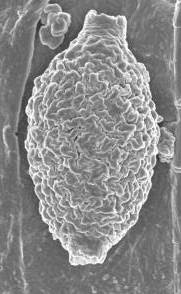
|
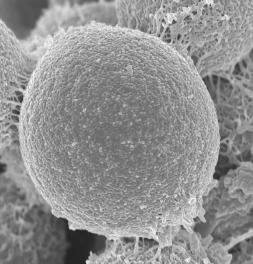
|
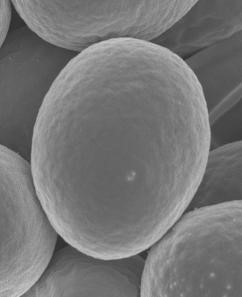
|
|
nanoe™ exposed group |
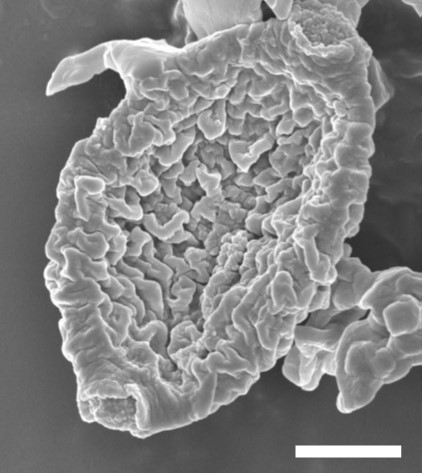
|
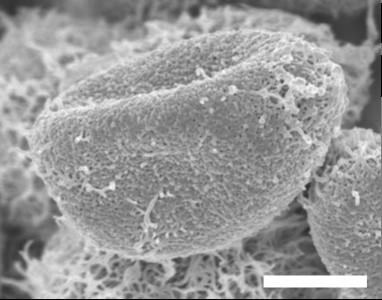
|
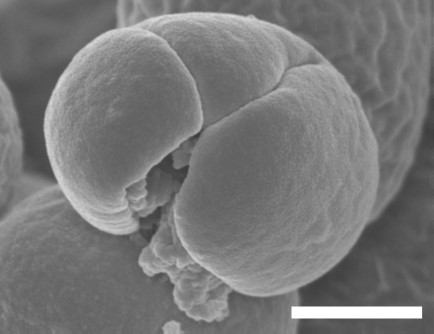
|
Figure 1 Morphology observation of fungi using a scanning electron microscope
Deformation was observed in the group exposed to nanoe™.
Lines in the figure indicate 1 µm.
|
|
Cladosporium sphaerospermum |
Absidia corymbifera |
Rhodotorula rubra |
|
nanoe™ non-exposed group |
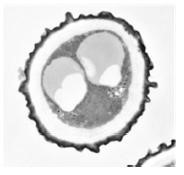
|
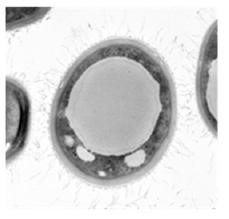
|
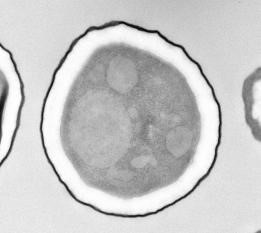
|
|
nanoe™ exposed group |
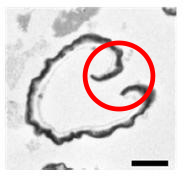
|
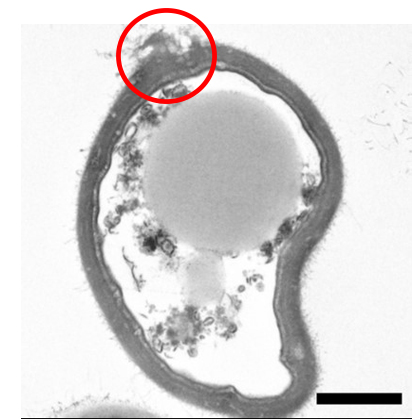
|
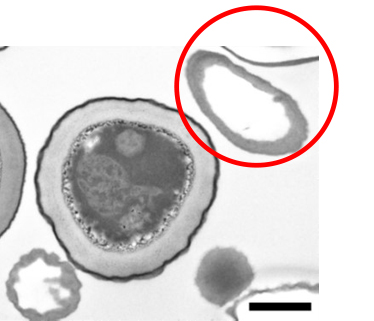
|
Figure 2 Morphology observation of fungi using a transmission electron microscope
In the group exposed to nanoe™, the leakage of contents caused by damage to cell walls was observed.
Lines in the figure indicate 1 µm.
■ Empirical data
• Verification organization:
Osaka Metropolitan University
• Target of verification:
Cladosporium sphaerospermum
• Verified equipment:
nanoe™ generator

• Verification method:
In a 45-liter test space, a nanoe™ generator is installed at a position 10 cm from the floor surface.
A piece of gauze saturated with fungus liquid is placed in a Petri dish, it is exposed to nanoe™ for two hours, and the fungal count is measured after a specified period of time (Figure 3).
• Results:

Figure 3 Elapsed time, fungal count, and inactivation rate after exposure to nanoe™
An increase in the inactivation rate was observed over time
without continuous exposure to nanoe™.
■ Conclusion
The nanoe™ has been proved that its inactivation effect, accompanied by changes in the form, is caused by leakage of content due to the destruction of cell walls regardless of the form and cell wall components in a study using two types of molds and one type of yeast. Furthermore, it is considered that once fungi are damaged by exposure to nanoe™ in water for a certain period of time, the damage to cell walls spreads, leading to inactivation even when nanoe™ is not exposed continuously.
■ Principle of generation of nanoe™
The atomizing electrode is cooled by a Peltier element, which condenses moisture in the air to create water. Afterwards, a high voltage is applied across the atomizing electrode and the opposite electrode to generate nanoe™ that contain OH radicals of approx. 5 to 20 nm in size. (Figure 4)

*1 Verified with two types of molds (Cladosporium sphaerospermum and Absidia corymbifera)
*2 [Press release] Verification of the effect of nanoe™ on molds - Verification of its effectiveness to suppress substances that cause mold allergens as well as the growth of mold contained in house dust and other materials –
■ Video explaining these verification results
Visualization of mold floating in the room
Mechanism of inactivation of mold
Change in spore counts after nanoe exposure
About the Panasonic Group
Founded in 1918, and today a global leader in developing innovative technologies and solutions for wide-ranging applications in the consumer electronics, housing, automotive, industry, communications, and energy sectors worldwide, the Panasonic Group switched to an operating company system on April 1, 2022 with Panasonic Holdings Corporation serving as a holding company and eight companies positioned under its umbrella. The Group reported consolidated net sales of 8,378.9 billion yen for the year ended March 31, 2023. To learn more about the Panasonic Group, please visit: https://holdings.panasonic/global/
Media Contact
Stella Lim
Department Head
Marketing Communication Department
Panasonic Malaysia Sdn. Bhd.
Lot 10, Jalan 13/2, 46200 Petaling Jaya, Selangor.
Email: stella.lim@my.panasonic.com
Office: +603-7809 7605
Mazlee Mokhtar
Manager, Corporate Communication
Marketing Communication Department
Panasonic Malaysia Sdn. Bhd.
Lot 10, Jalan 13/2, 46200 Petaling Jaya, Selangor.
Email: mazlee.mokhtar@my.panasonic.com
Office: +603-7809 7877
Recommend Pages
News articles relevant to this topic were not found.
-
Launch of U series Rain Shower by Panasonic Manufacturing Malaysia Berhad

-
Panasonic Launches Next-Generation Air Conditioning Series to Redefine Home Comfort in Malaysia

-
Panasonic Sets New Malaysia Record, Inspires Youth Environmental Action through Battery Recycling Drive

-
Launch of Panasonic Bayu Ceiling Fan by Panasonic Manufacturing Malaysia Berhad

-
Panasonic Strives to Combat Haze with Innovative Indoor Air Quality Solutions

-
Panasonic Malaysia Champions School Hygiene with Groundbreaking Bidet Initiative

-
Cumulative Global Shipments of nanoe™ Devices Exceed 100 Million Units

-
Pathogenic Fungus*1 99% Inactivated by nanoe™ Technology











